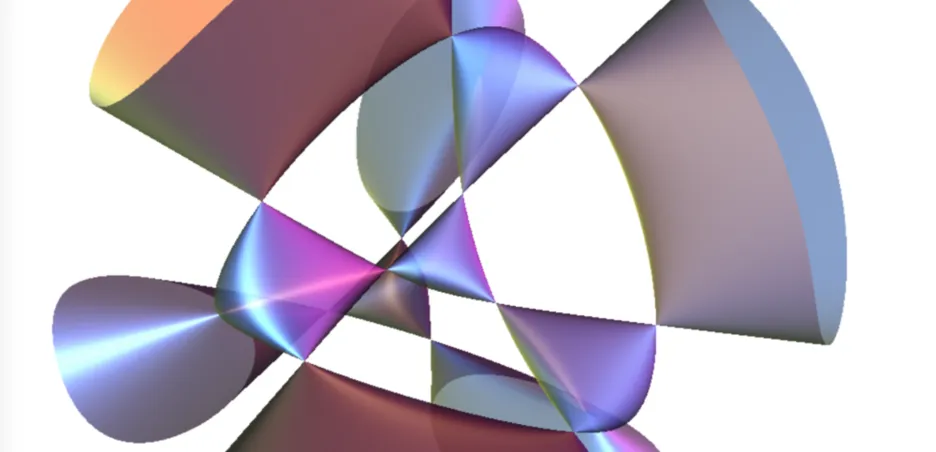Algebra & Algebraic Geometry

Image: Jürgen Richter-Gebert
Algebra is an abstract mathematical theory, which is supported by algorithms and experiments. In algebraic geometry, we study systems of polynomial equations. Here, it is possible to approach them from two points of view:
- via commutative algebra. In this case, the equations define an ideal in a (polynomous-) ring.
- via geometry. As the solutions of the equations form an algebraic variety or a diagram.
Algebraic geometry, commutative algebra and algorithmic algebra
In 1893, Hilbert proved his Nullstellensatz, which creates a bridge between algebra and geometry. About 60 years later, this bridge was refined and taken to a new level of abstraction by Grothendieck's introduction of schemes. These provide a uniform approach to algebra, geometry, number theory, and topology, placing modern algebraic geometry at the crossroads between various mathematical disciplines.
At roughly the same time, new computational techniques brought many of the objects of algebraic geometry into the realm of computational mathematics. Today, algorithmic methods play an important role in areas such as geometry, number theory, group theory, and representation theory.
Research areas
In the group Algebra & Algebraic Geometry we study and teach, amongst others, the following fields of research:
- Algebraic surfaces
- Characteristic p-geometry
- Commutative Algebra
- Homological Algebra
- Invariant theory
- Representation theory